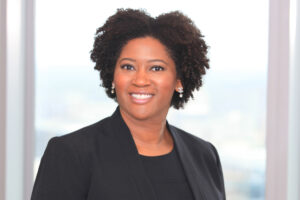As unions aim to organize new industries, financial institutions have not been immune.
In 2022, the Communications Workers of America (CWA) won an union election at Genesee Co-Op in Rochester, New York — the first credit union to organize in decades. Shortly after, Lake Michigan Credit Union followed suit. Then, the CWA managed to garner enough support from employees at Wells Fargo’s retail branches to file six union representation petitions.
In December 2023, Wells Fargo bankers, tellers, and bank coordinators voted “yes” to the union, making it the first retail bank with a bargaining unit in over 40 years. Once a roughly untouched industry in the organizing realm has now become a wealth of untapped potential.
Community banks need to stay alert. Companies that once believed they were immune to organizing now endure the consequences (Starbucks, for example). What do you in the banking industry need to be aware of as the organizing wave makes its way to your doorstep?

Unions will seek out community banks
In 2014, workers banded together to create the Committee for Better Banks, a worker coalition partnered with the CWA to address the post-2008 strains on the financial industry. The group caught traction in 2019 when they began discussions with Beneficial State Bank to form a union that the bank voluntarily recognized a few months later. Beginning on November 20, 2023, the CWA continued their momentum by filing their first petition at Wells Fargo. Following the win, Nick Weiner, the organizing director for the Committee for Better Banks, reported to Bloomberg that organizing efforts at banks and community banks are “going to build and build, and the momentum is incredible.”
Your employees may seem satisfied, but that will not stop unions from persuading them they need their services — an effort with a fair amount of success thus far.
Smaller groups are more susceptible to organizing

Close quarters means close relationships. If one teller feels wronged by their supervisor, it is only a matter of time before their co-workers whom they talk to and work next to every day become aware and commiserate over the perceived unfairness. Compare this to a group of 1,200 warehouse workers who work over multiple different shifts. It is substantially easier (and quicker) to organize smaller employers.
Proactive management is the key to success
It is imperative to prepare management to proactively engage, listen and respond to employees’ needs. Such engagement reduces the risk of unionization being attractive to your employees. If your managers can answer basic questions about unions, even better!
Better wages won’t cut it
The modern worker demands more than more money, better benefits and reasonable working hours. Lately, employee “activism” in the workplace is on the rise. Employees expect companies to follow ethical practices and respond to social justice issues. This is particularly prevalent in the banking industry where the 2008 financial crisis and reports of fraudulent activity caused ethical unrest amongst workers.
Union or no union — community banks need to play by the rules
The National Labor Relations Act applies to all employers, not just those with a union. The NLRA provides all employees the right to form, join, or assist a labor union, to bargain collectively, and to engage in “protected concerted activities for the purpose of collective bargaining or other mutual aid or protection,” as well as the right to refrain from those activities.
For example, if you do not have a union at your community bank, your employees still have the right to discuss their wages, hours, and other terms and conditions of employment without fear of retaliation. This also includes the right to talk about the union without fear of reprisal. It is important not to make the mistake of believing your community bank is immune to issues typically only associated with unionized employers.
Union elections move fast
The NLRB recently re-instituted “quickie election rules” to effectuate “expeditious resolution” of union petitions, meaning once the union files a petition, you likely have 21 days until an election. If you failed to prepare management to lead during an election, you will have (at best) 21 days to adequately prepare for potential hearing and train management on how to legally field union-related questions, communicate with employees, and convince them of the community bank’s position.
Train management early and you will save yourself valuable time when it counts.
Election aftermath is a long, winding, costly road
Consider the numbers. This process does not end with the election. If the union prevails, the community bank will have to bargain in good faith for a collective bargaining agreement. According to Bloomberg’s most recent data, it takes — on average — 465 days to come to a first CBA. Over 53 percent of negotiations take longer than one year — 14 percent taking three years or more. Even if the union does not prevail, they will likely challenge the results, sending the community bank down another winding road of litigation that can last years.
As the interest in unions and the emergence of “homegrown” unions continues to increase, it is very likely that community banks will become more of a target. Thus, it is critical that human resource professionals and managers/supervisors be prepared for an organizing campaign to land on their doorstep.
Amber M. Rogers is a partner in the Labor and Employment group at Hunton Andrews Kurth LLP, Dallas office. She can be reached at [email protected]. Rachel Roney is an associate in the Labor and Employment group at Hunton Andrews Kurth LLP, Dallas office. She can be reached at [email protected].
